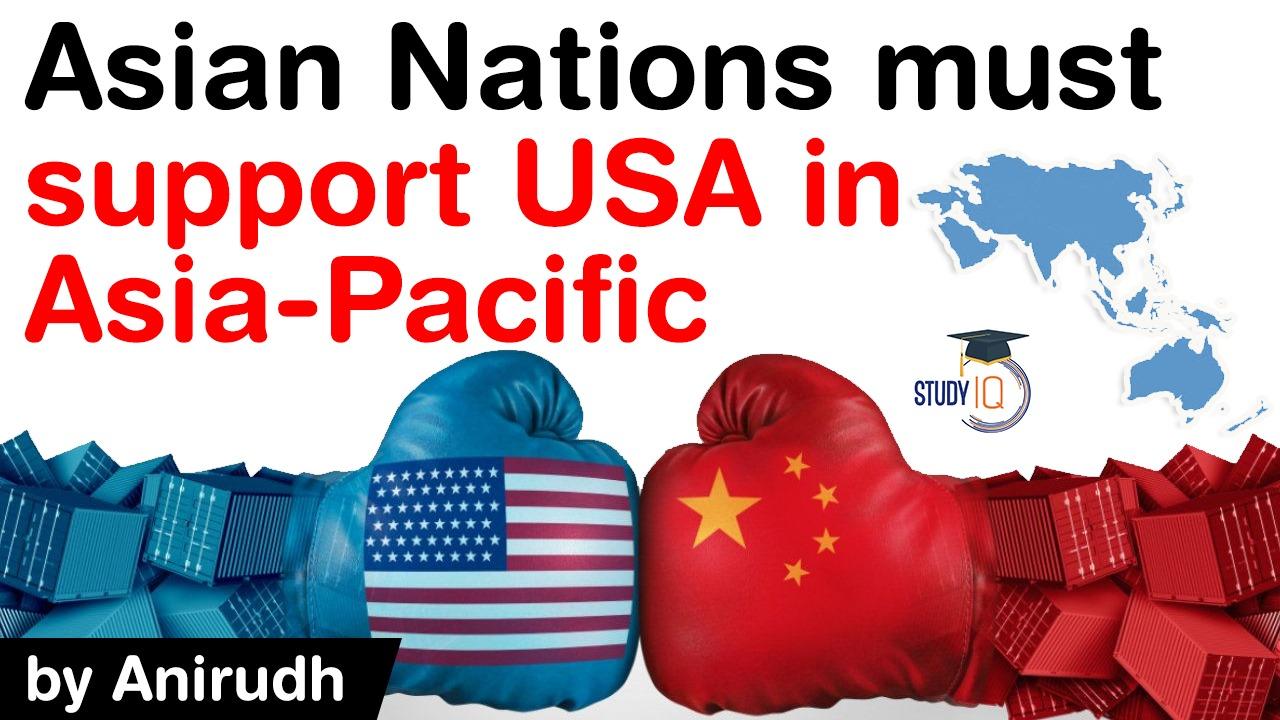Table of Contents
US & China confront each other as rivals in Asia
- Today, the United States and China confront each other as bitter rivals.
- Each seeks strategic dominance in East Asia in the “Asian century”: the US wants to retain the primacy it has exercised for over 100 years, and China wants to take its place.




- It can be comfortably said that SOUTH CHINA SEA is the latest GREAT GAME in Asia Pacific region.
Both are showing military superiority
- The stakes are high.
- The dangers of this situation are acute. A minor clash in somewhere like the South China Sea or the Taiwan Strait could happen at any time, and escalate into a full-scale regional war, and even a nuclear war.
But neither seeks war
- But, Both are increasingly engaging in military posturing in a bid to convince the other to withdraw from the contest.

Still, it would be horrific for Asia and Asians
- The consequences for the nations and peoples of Asia would be horrific. It is therefore vital and urgent to defuse this risk.
- This can best be achieved by easing the strategic rivalry driving the tensions.
Now, which side to chose?
- To further that goal, states in the Asia-Pacific have to look to both Beijing and Washington, as the two rivals share responsibility for the escalating rivalry.
- But where to start?
- Asians want to incline towards USA
- Everyone in the region is anxious about China’s power, and how it will be used.
- And there is an acceptance that a strong US role in Asia is the best way to balance and limit Chinese influence, so we all want Washington to remain actively engaged in the region.

But don’t want to spoil relations with China…
- But everyone also values its relations with China, and none wants to be drawn into a new Cold War against it.

Will China accept US role now?
- That’s where Asian states come in
- But the Chinese government cannot and will not accept US primacy the way it has in the past.
- So Asia has to support the US in balancing China, but not in containing it.
But Asian states haven’t been expressive
- Countries in Asia have not generally been blunt enough with Americans about how we see developments in Asia and the region’s strategic future. And that is partly because we have not been clear ourselves about what has been going on as old-style power politics returns to Asia.
What must Asian States do?
- So states in East Asia and the Western Pacific have to develop a much clearer and more realistic shared understanding of the risks the region faces from the rising strategic rivalry between America and China, of how they can best be managed in the interests of the region, and convey that to both rivals, but especially to Washington.

- Singapore Prime Minister Lee Hsien Loong’s speech at the Shangri-La Dialogue last year was an excellent start to this process. “Small states like Singapore can do little to influence the big powers, but we are not entirely without agency,” Lee said.

What must Asian States do?
- Leading Asian countries should get together and have a frank and realistic exchange on the dangerous trends in Asia, and try to develop a shared view about how they can be addressed.
- This must include especially a view on the role we believe the US can and should play in the region in the decades ahead.
- And it should include clear messages about what Asian states are willing or not willing to do to support America against China.
Asian Nations must be expressive
- And then they should, separately and together, convey those ideas to Washington in the plainest possible terms. Because until US policymakers understand how the Asia-Pacific region thinks about these issues, they will not understand that their future in Asia must be based on some kind of accommodation with China.
A balanced solution for US, China and Asian Nations
- Only then, the risk of a major war b/w US and China can be prevented.
Latest Burning Issues | Free PDF






















 WhatsApp
WhatsApp